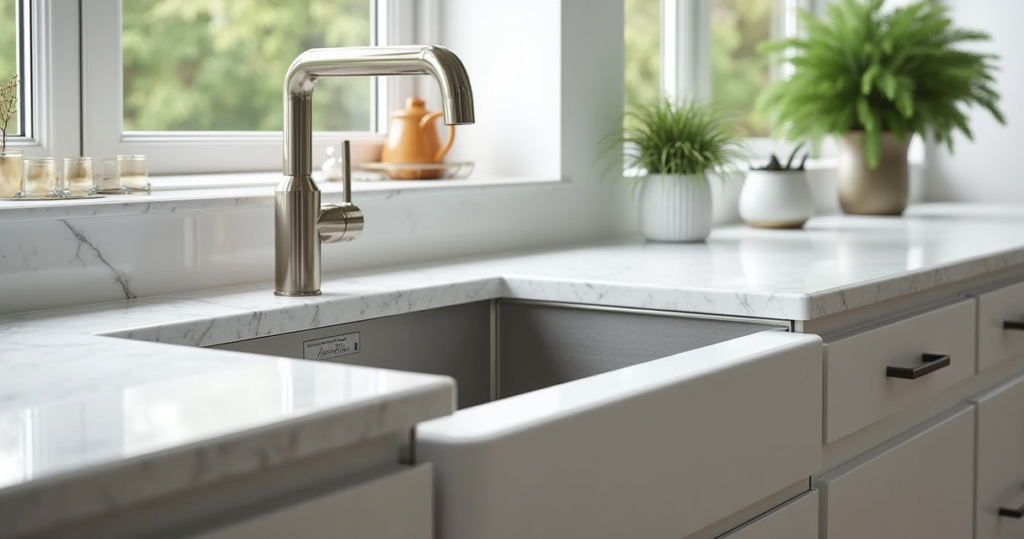In every home I design, from a minimalist Haussmann apartment in Paris to a light-filled villa overlooking the South China Sea, the kitchen is more than a room. It’s the energetic center. It’s where culture is tasted, stories are shared, and creativity finds its form. And at the heart of that center isn’t the stove or the grand island—it’s the sink.
I know, it sounds a bit unglamorous. We obsess over cabinetry and appliances, but the sink is where the daily dance of life happens. It’s the one feature you’ll interact with dozens of times a day. Choosing the right one goes so far beyond material and color. It’s a statement about how you live, how you cook, and the kind of beauty you want to surround yourself with.
So, let’s move past the basics. Forget those overwhelming lists. I want to share how I approach this essential decision, blending the pragmatism of European modernism with the thoughtful intention of Asian design. This is about finding a sink that doesn’t just function, but feels right.
1. The First Cut: Undermount or Nothing
Okay, let’s get this out of the way. If you’re chasing a sophisticated, contemporary aesthetic, the conversation starts and, frankly, often ends with an undermount sink. A drop-in sink, which sits on top of the counter with a visible rim, just interrupts the visual flow. That lip is a magnet for grime and visually chops up your beautiful countertop.
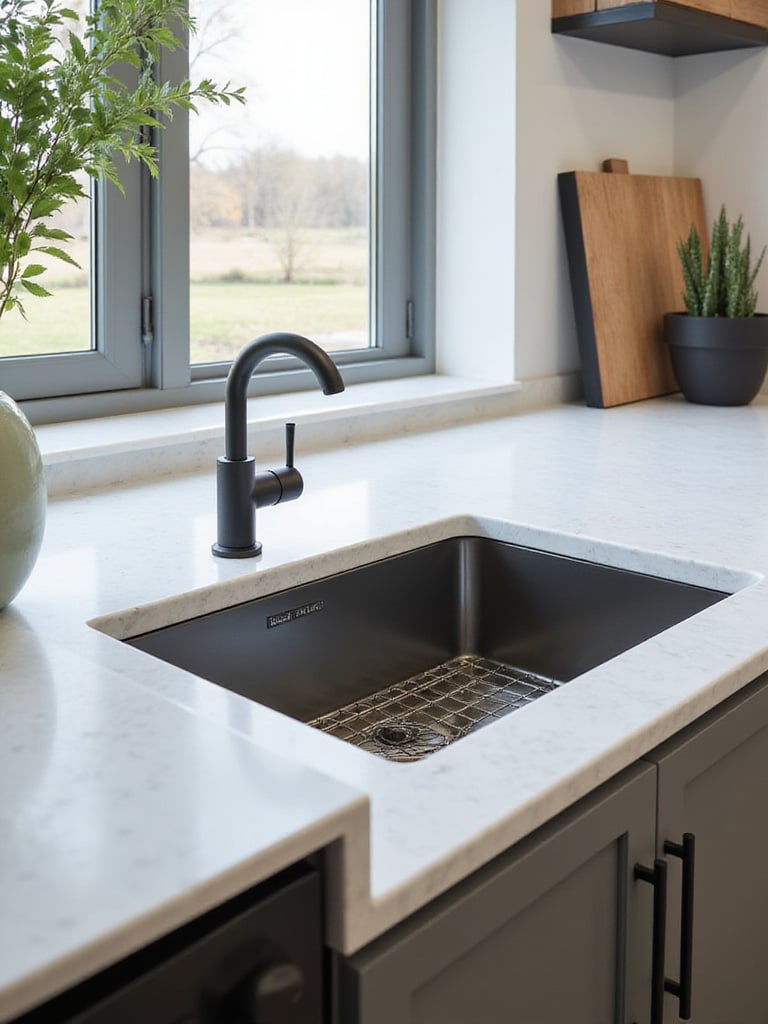
An undermount sink, installed directly beneath the countertop material, creates a single, unbroken plane. It’s a core tenet of modernism—clean, uninterrupted lines. This isn’t just an aesthetic choice; it’s a functional one. You can sweep crumbs and water directly into the basin without a “thump-thump” over a ledge. The seamlessness feels intentional, sleek, and utterly refined. While drop-in sinks have their place in certain budgets or with laminate counters, for the spaces we’re talking about—spaces with quartz, stone, or solid surfaces—undermount is non-negotiable for me. It’s the foundation of a modern kitchen’s clean geometry.
This single decision has a huge ripple effect on your daily cleaning and the overall serene feeling of your kitchen. So, let’s agree to start there.
2. The Enduring Classic: Stainless Steel’s True Quality
Stainless steel is the quintessential material for a reason. It’s the white t-shirt of kitchen sinks: timeless, hygienic, and incredibly durable. But—and this is a big but—not all stainless steel is created equal. The cheap, tinny-sounding sink that echoes every dropped spoon is a world away from a quality, architectural-grade basin.
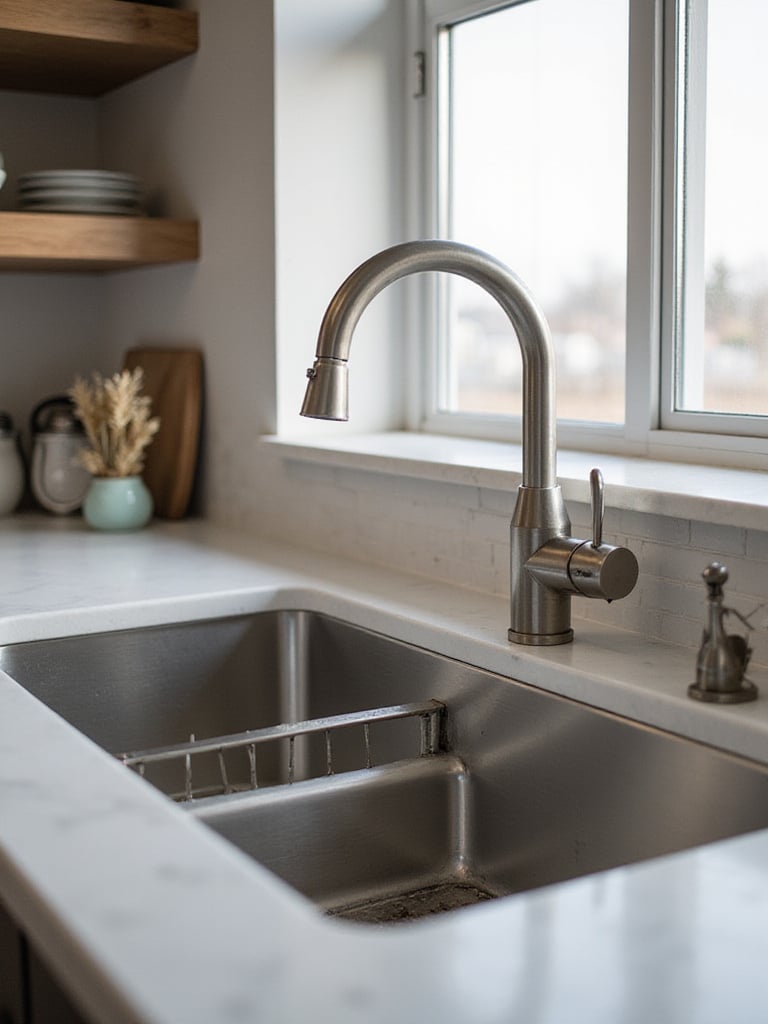
Here’s what I look for. First, gauge. It’s a bit counterintuitive, but the lower the number, the thicker the steel. Forget anything above 18-gauge. For a kitchen that gets real use, I only specify 16-gauge. It resists denting and has a substantial, solid feel. Second is the grade, which should be 304 stainless steel. This number tells you it has the right mix of chromium and nickel to fight off rust and corrosion for decades. Finishes like brushed or satin are also your best friend, as they do a brilliant job of hiding water spots and minor scratches, keeping the look pristine.
The biggest giveaway of quality, though? The sound. A great stainless steel sink will have thick rubber pads and an undercoating that absorbs vibration. It transforms the clanging of pots into a muted, satisfying thud. It’s a small detail that contributes to a more peaceful, Serene kitchen environment, something deeply valued in both Vietnamese and European design philosophies.
3. The Modern Contender: The Beauty of Granite Composite
Now, if stainless steel feels a little too clinical for you, granite composite is where things get exciting. This material, typically made from about 80% crushed stone mixed with a resin, offers a stunning blend of natural texture and modern performance. Frankly, it’s one of my favorite materials to work with when I want to introduce warmth and subtle color.

Its biggest selling point is its incredible scratch resistance. I had a client, a passionate home cook who used heavy cast-iron skillets daily, who was constantly worried about marring a new sink. We chose a deep matte black granite composite from Blanco, and years later, it still looks flawless. It can handle high heat (up to around 530°F), so you don’t have to panic if a hot pan briefly touches the surface.
What really opens up design possibilities is the color palette. You can find deep, earthy tones, soft whites, and sophisticated greys that can either match your countertop for a monolithic look or provide a stunning contrast. Imagine a warm beige granite composite sink against a richly veined Calacatta Viola marble. The combination is just breathtaking—it feels both organic and impossibly chic.
4. Grounding the Space: The Weight and Charm of Fireclay
Fireclay sinks bring an immediate sense of history and substance to a kitchen. Forged in kilns at extreme temperatures, the ceramic becomes fused, creating a surface that’s non-porous, incredibly durable, and resistant to just about anything you throw at it. The iconic apron-front or “farmhouse” style has a presence that can anchor an entire room.
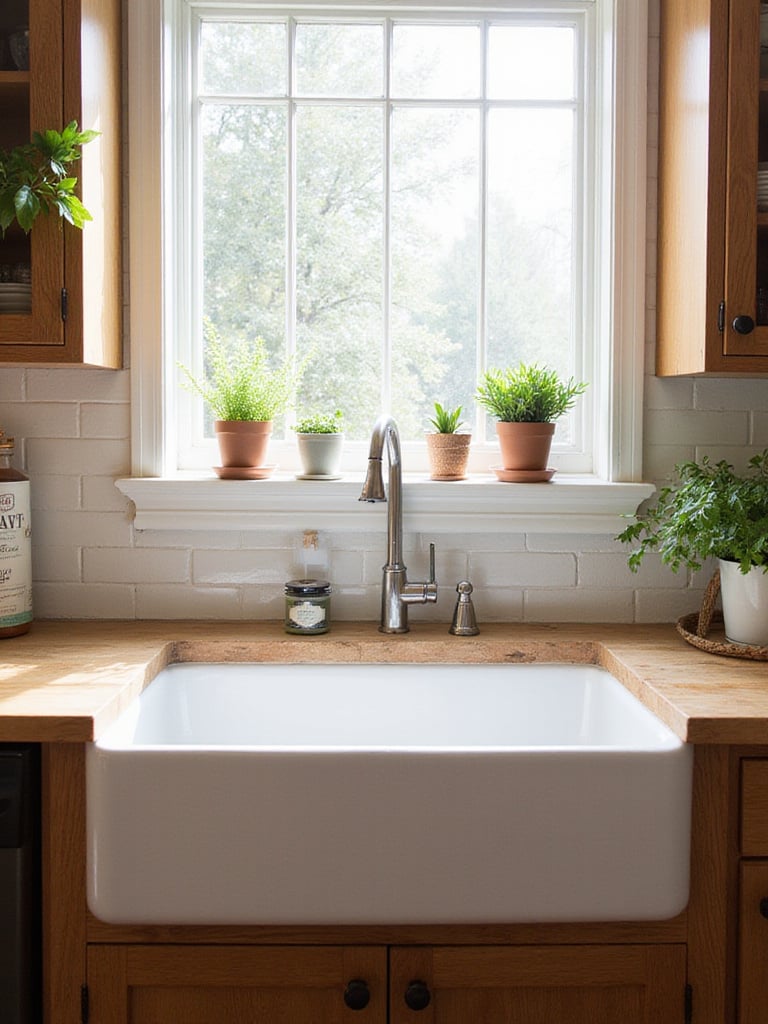
However, this isn’t a choice to be made lightly. These sinks are heavy. We’re talking 80 to 150 pounds. This means your cabinet base needs to be specifically built or reinforced to support it, which is an added complexity and cost your contractor must plan for. Don’t let anyone tell you they can just drop it into a standard cabinet. I’ve seen that mistake, and it’s a painful one to fix.
Despite the installation challenge, there’s an undeniable appeal. The luminous, glossy finish feels classic, yet it can be styled in a very modern way. Paired with minimalist cabinetry and a sleek, industrial faucet, a fireclay sink creates a beautiful tension between old and new. It’s a perfect piece for a transitional space that honors tradition while embracing contemporary life.
5. For the Serious Cook: The Unrivaled Single Bowl
If you cook, and I mean really cook, a large, single-bowl sink is your best friend. There’s nothing more frustrating than trying to wash a large roasting pan or a giant stockpot (essential for making a proper phở broth!) by angling it awkwardly in a divided sink. A single basin gives you an uninterrupted, expansive workspace.

Think about it: washing large baking sheets, prepping vegetables, or even bathing a small baby (I’ve heard stories!)—it all becomes simpler in one generous space. A 32-inch single bowl offers a shockingly larger usable area than a standard double bowl. It just streamlines the entire cleanup process.
And this is where modern design truly shines. Many single-bowl sinks now come as “workstations” with an integrated ledge. This simple feature is a game-changer. You can slide a custom-fit cutting board, colander, or drying rack right over the sink. It’s an incredibly efficient system that keeps your countertops clear and your workflow contained, moving from prep to cleaning in one fluid motion.
6. For the Methodical Organizer: The Efficiency of a Double Bowl
While I often lean towards a single bowl for its sheer capacity, I have to respect the beautiful logic of a double-bowl sink. For those who prefer a more methodical approach to dishwashing, it’s perfection. One side for soapy water, the other for rinsing. It’s a classic system that promotes hygiene and can actually be more water-efficient than leaving the tap running.
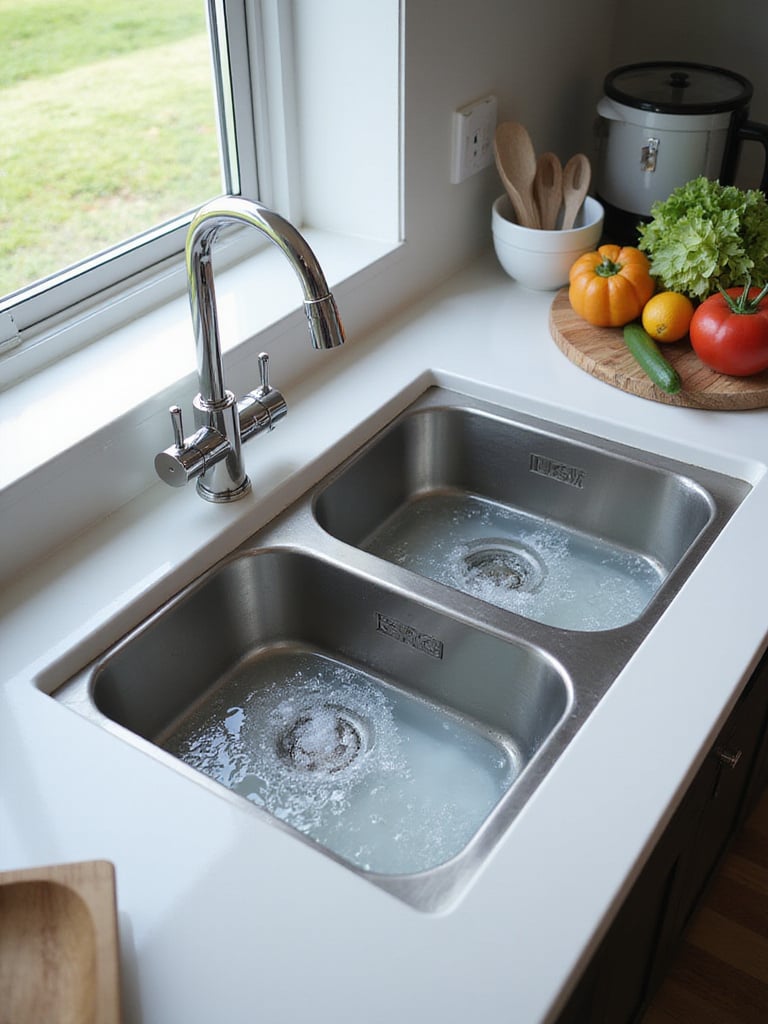
The separation is also fantastic for multitasking. You can be defrosting chicken in one basin while washing vegetables in the other without a second thought about cross-contamination. It supports the rhythm of a busy kitchen where multiple things are happening at once.
The key is getting the proportions right. A 50/50 split works for some, but I often find a 60/40 or even a 70/30 configuration more useful. The larger bowl handles the bulky items, while the smaller one is perfect for a garbage disposal or quick rinses. It’s about honestly assessing your habits—are you more of a one-pot-at-a-time cook, or a multitasker with a dozen things in motion?
7. The Best of Both Worlds: The Clever Low-Divide
What if you want the separation of a double bowl but hate that you can’t fit your biggest pan in it? Enter the low-divide sink. This design is exactly what it sounds like: a double-bowl sink where the central divider is only half the height of the sink’s walls.
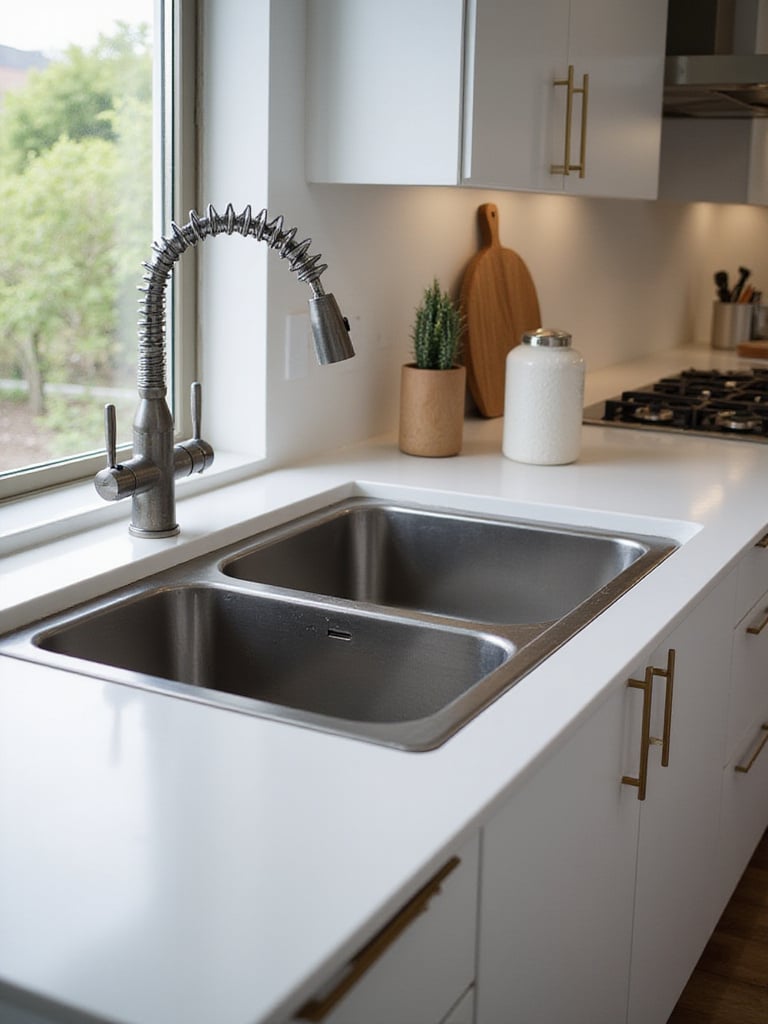
It’s such a simple, elegant solution. The low barrier is just enough to keep your soapy water separate from your rinse water during normal use. But when you need to wash that big roasting pan or a cookie sheet, you can lay it right across the top of the divider, allowing the whole thing to soak. You get task separation and large-item capacity.
This is a perfect example of design evolving to meet real-world needs. It appeals to almost everyone because it offers flexibility. You don’t have to commit to one style of working. For families where cooking styles vary, or for anyone who just wants to keep their options open, the low-divide sink is a brilliantly practical compromise.
8. The Ergonomics of Depth: More Than Just Splash Control
The depth of your sink is a detail that has a huge impact on your physical comfort. Most contemporary sinks fall in the 8 to 10-inch range. A deeper sink is great for hiding dirty dishes and containing splashes from a powerful faucet. But—and this is crucial—a sink that’s too deep for you can be a literal pain in the neck.
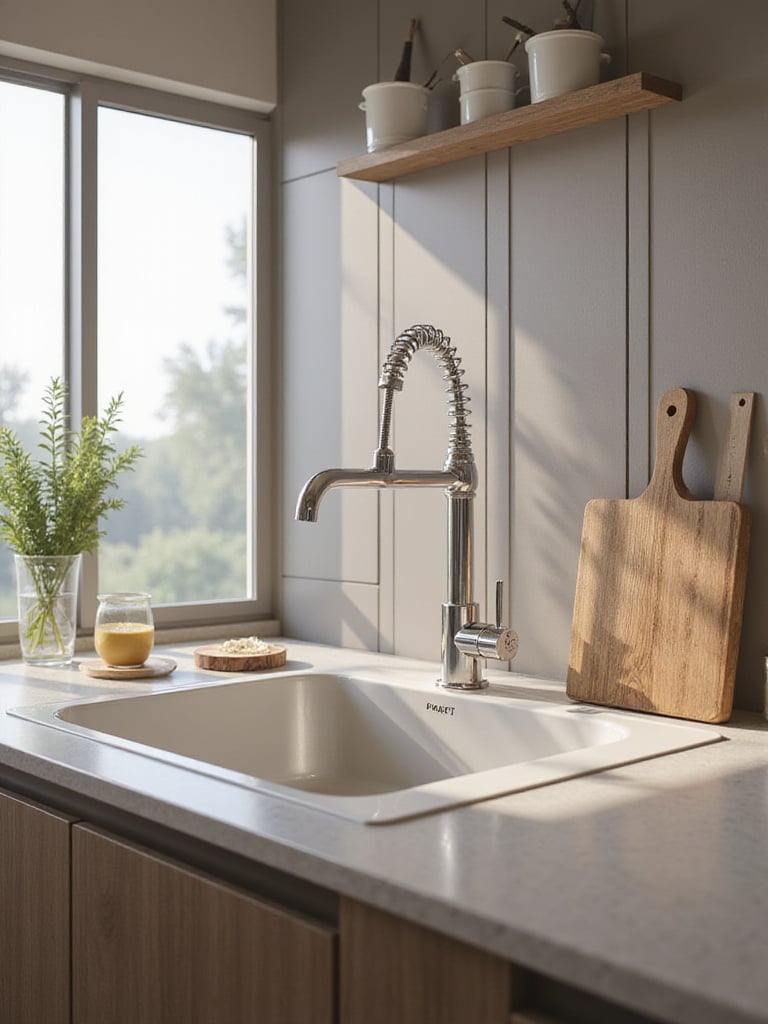
If you’re on the shorter side, constantly leaning over into a 10-inch deep sink to reach the bottom will strain your back and shoulders. Conversely, a taller person might find a deeper sink more comfortable as it reduces the need to stoop. It’s about finding that sweet spot. My advice? Go to a showroom and physically stand at a few different sinks. Pretend you’re washing dishes. It might feel silly, but it will tell you more about what’s right for your body than any spec sheet.
This is a place where function must lead form. A beautiful sink that gives you a backache is a design failure, no matter how good it looks.
9. Silence is Golden: The Importance of Sound Dampening
We touched on this with stainless steel, but it’s so important it deserves its own moment. The sound a sink makes—or doesn’t make—is a key part of creating a serene kitchen environment. In an open-concept living space, the sound of water hitting a bare metal sink can be incredibly intrusive.
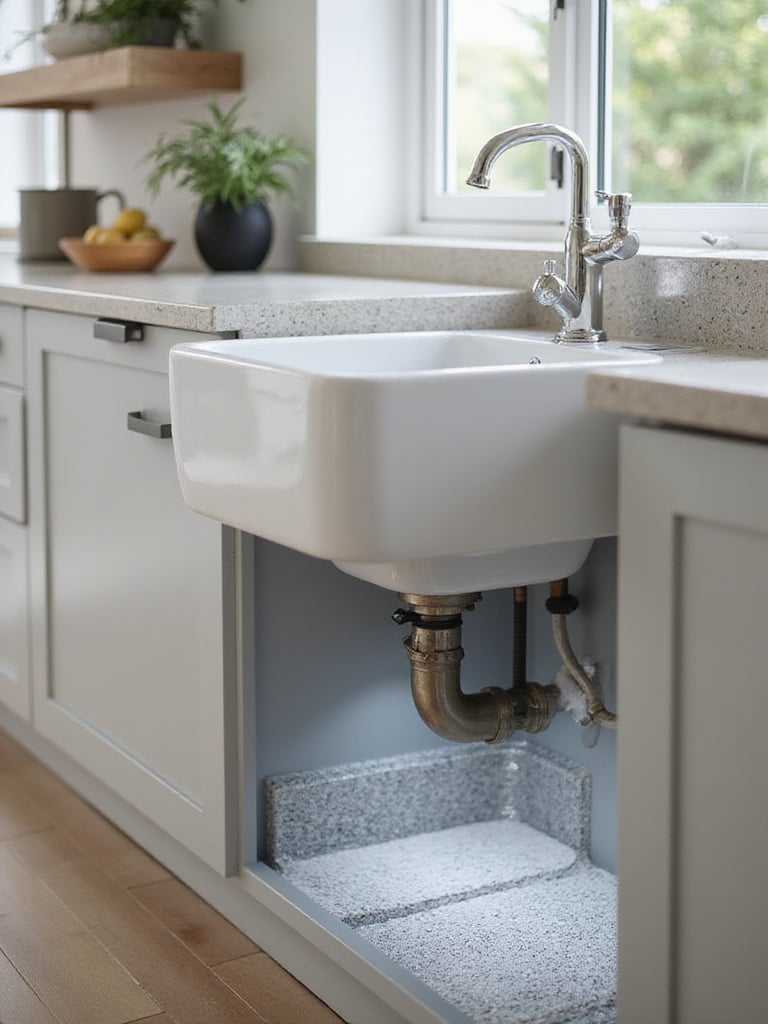
Quality sinks, regardless of material, invest in sound control. This usually involves thick rubber pads adhered to the bottom and sides of the basin, along with a layer of spray-on coating. This combination absorbs the vibration and deadens the noise from running water, clattering dishes, and the whir of the garbage disposal. The difference is not subtle. It’s the difference between a jarring, industrial noise and a gentle, peaceful background sound.
When you’re shopping, don’t just look at the sink—turn it over. Look for comprehensive pad coverage. If you just see a few tiny pads, the manufacturer was cutting corners. A quiet sink is a sign of quality and a small luxury you’ll appreciate every single day.
10. The Beauty of a Low-Maintenance Surface
A kitchen should be for creating, not for constant, tedious cleaning. That’s why the porosity of your sink’s surface is so important. A non-porous material like high-quality granite composite, fireclay, or solid surface means that spills—red wine, coffee, beet juice—can’t penetrate the surface. They simply wipe away without leaving a permanent stain.
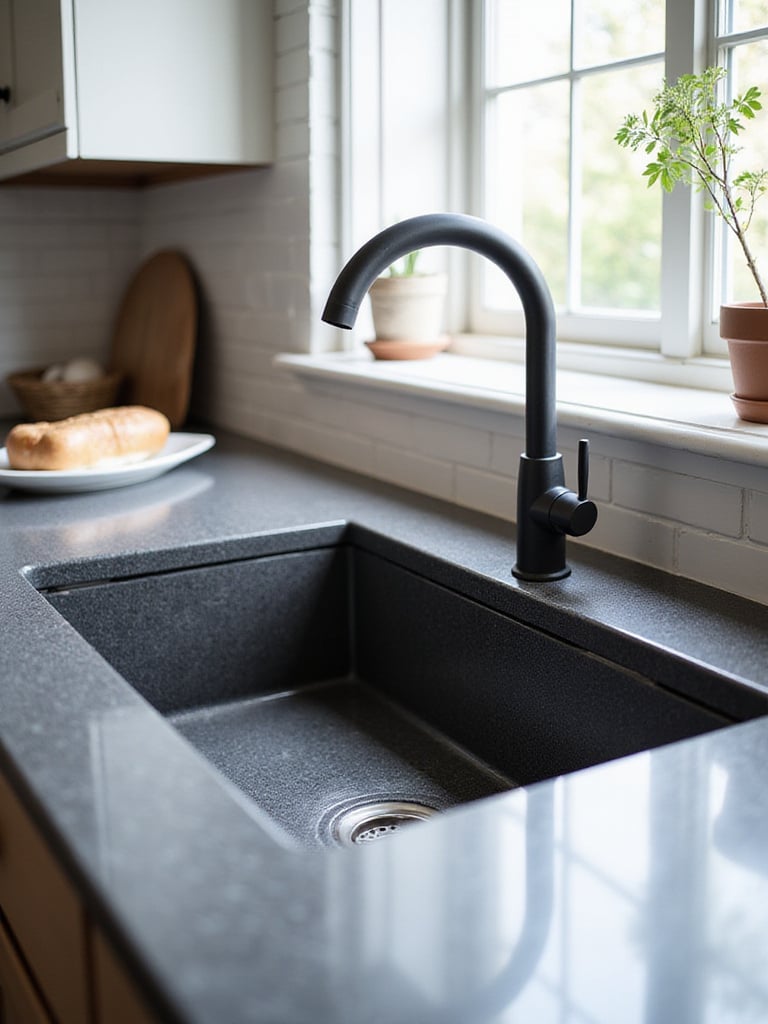
The finish plays a huge role here as well. Highly polished, mirror-like surfaces are stunning but will show every single water spot and fingerprint. A matte or brushed finish is far more forgiving for daily use. It diffuses light beautifully and masks the minor imperfections of a well-loved kitchen.
Ultimately, this comes down to creating a space that feels effortless. Your design choices should support your lifestyle, not add to your list of chores. A non-porous surface paired with a forgiving finish ensures your sink looks as good in five years as it did the day it was installed, with minimal fuss.
11. Can It Take the Heat? A Question of Material Integrity
How do you cook? Are you the type to pull a bubbling pan of pasta off the stove and drain it directly into the sink? Or do you meticulously place hot pots on trivets? Your answer should heavily influence your material choice.

This is where materials really start to separate themselves. A premium granite composite sink can typically withstand temperatures up to 530°F without scorching or cracking. Fireclay is also incredibly heat-resistant, a benefit of being born in a 2200°F kiln. High-quality stainless steel can handle the heat too, though extreme temperature shocks could theoretically cause some warping over time (though it’s rare with thick-gauge steel).
Where you need to be careful is with lower-quality composites or solid-surface materials, which may have much lower heat tolerances. Placing a hot pan in the wrong sink can cause permanent damage, from discoloration to cracks. Always check the manufacturer’s specifications. Knowing your sink’s thermal limits gives you the freedom to work quickly and efficiently in the kitchen without worry.
12. The Secret to Storage: Smart Drain Placement
This is my favorite “aha!” moment to share with clients. It seems like a minor detail, but the placement of your sink’s drain can revolutionize the storage space beneath it. A traditional sink has the drain right in the center, which means the P-trap and garbage disposal sit smack in the middle of your cabinet, creating an awkward, difficult-to-organize mess of pipes.
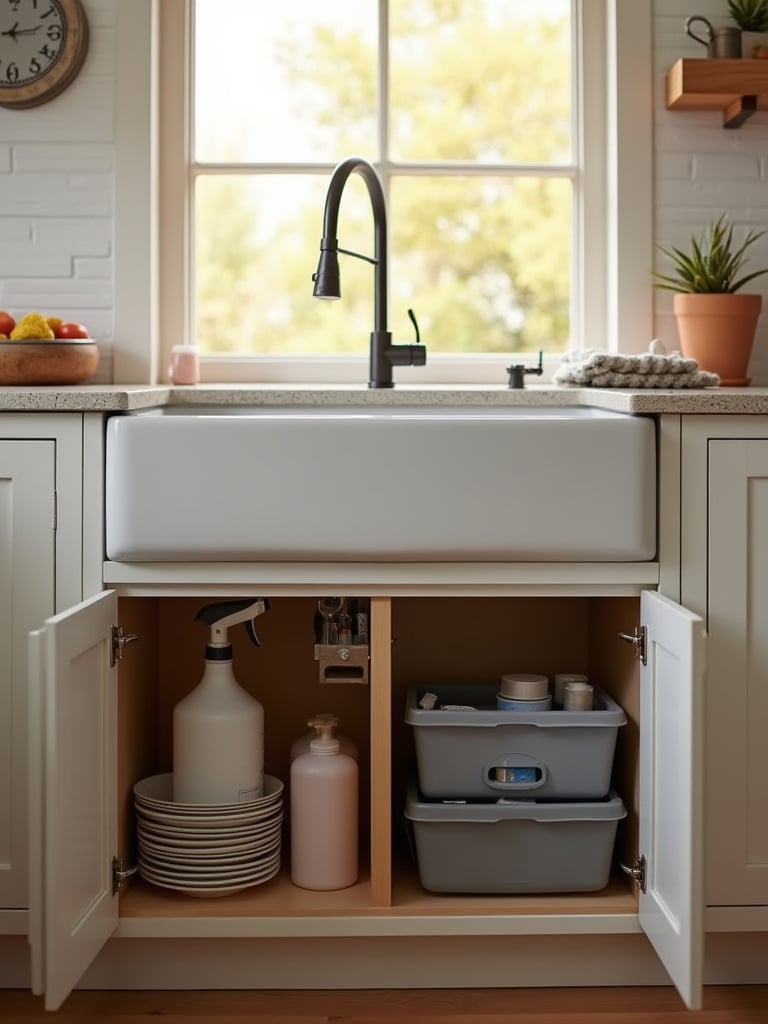
Modern sink designs have gotten much smarter. Look for sinks with a rear-set or offset drain. By moving the drain to the back or corner of the sink, all the plumbing is tucked neatly away. Suddenly, the entire front portion of your under-sink cabinet is a wide-open, usable space. You can easily fit a pull-out trash and recycling center, drawers, or tiered organizers for cleaning supplies.
It completely transforms a cluttered, nearly useless cabinet into a highly functional storage zone. It’s a brilliant example of how a small shift in design can have an enormous practical impact on your daily organization.
13. The Integrated Workstation: The Ultimate in Efficiency
We’ve talked about the concept, but it’s worth diving into how truly transformative a workstation sink can be. The integrated ledge system essentially turns your sink into a second countertop, expanding your functional workspace without taking up more physical room.

The best systems come with a whole suite of accessories: a hardwood cutting board that slides along the ledge, a stainless steel colander for rinsing produce, a roll-up drying rack for dishes or produce. You can chop vegetables directly over the sink, sweeping waste into the disposal below. You can wash and drain pasta in one spot. You can wash dishes on one side while they air-dry on the other.
This integrated approach is the height of functional modernism. Everything has its place, and every movement is efficient. It reduces clutter, minimizes cleanup, and streamlines the entire cooking process. For anyone with a smaller kitchen, or for those who simply value hyper-efficiency, a workstation sink is less of a feature and more of a philosophy.
14. A Statement of Style: Finding the Perfect Finish and Color
The sink is no longer just a stainless steel basin. It’s an opportunity to make a powerful design statement. The world of finishes has exploded, and it’s one of the most exciting areas to play with fusion aesthetics. A matte black sink can feel incredibly architectural and modern, echoing the Japanese practice of Shou Sugi Ban (charred wood). A brushed brass or copper finish brings a layer of warmth and luxury that can soften a stark, European-style kitchen.
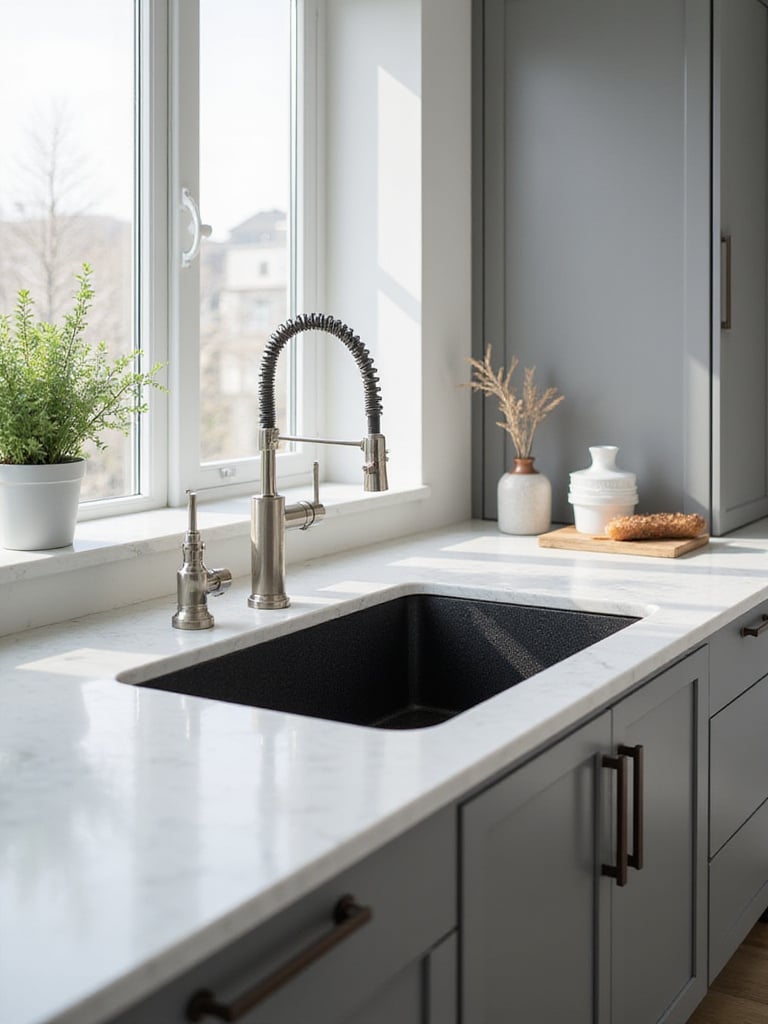
The goal is to create a cohesive story. You can match the sink color to your countertops for a seamless, minimalist look that lets other elements, like a stunning backsplash, take center stage. Or, you can do the opposite and choose a sink and faucet that act as a deliberate, dramatic focal point. Imagine a pristine white kitchen with a deep soapstone sink and an unlacquered brass faucet that will patina beautifully over time. The effect is personal, layered, and full of character.
Think about how the finish will interact with light and the other materials in the room. This choice isn’t just about a sink; it’s about tying the entire visual narrative of your kitchen together.
15. The Realities of Installation: Planning for a Smooth Process
Let’s be practical for a moment. A beautiful sink is only as good as its installation. This is not the place to cut corners. As we’ve discussed, undermount and farmhouse sinks have specific requirements that demand a skilled professional. An undermount installation requires a perfect cut in your countertop and a flawless waterproof seal. A heavy fireclay sink requires a reinforced cabinet structure built to handle its weight.
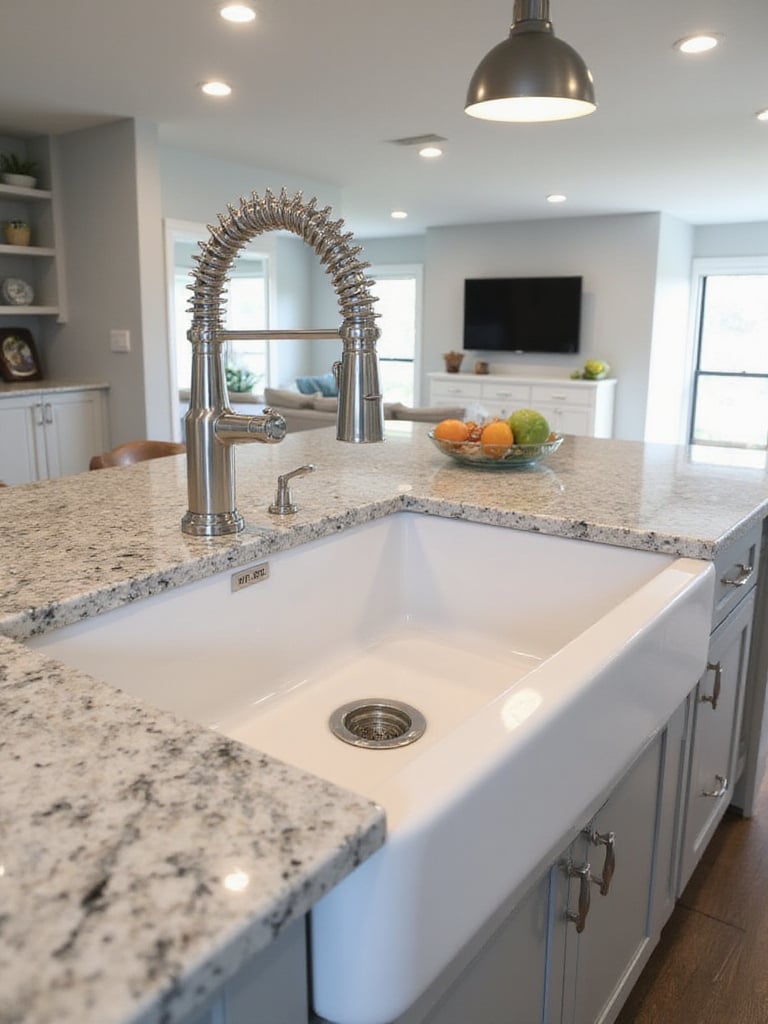
These complexities add to the overall cost, and it’s essential to factor that into your budget from day one. I’ve seen projects delayed and budgets blown because the cabinet base wasn’t measured correctly for the chosen sink, requiring expensive on-site modifications. The cost of labor for a complex installation can be double that of a simple drop-in.
Talk to your designer and your installer before you purchase the sink. Confirm your cabinet’s internal measurements—not the outside dimensions!—and ensure everyone is on the same page about the structural support needed. A little bit of planning here will save you a world of headaches down the road.
16. The Domino Effect: Sizing Your Cabinet Base
This is tied directly to installation, but it’s so critical I want to highlight it again. The most common mistake I see is ordering a sink that’s too large for the cabinet base it’s meant to sit in. Every sink has a specification sheet that lists the minimum cabinet base width required. This isn’t just the width of the sink itself; it accounts for the mounting clips, insulation, and clearance needed for the plumber to actually work.
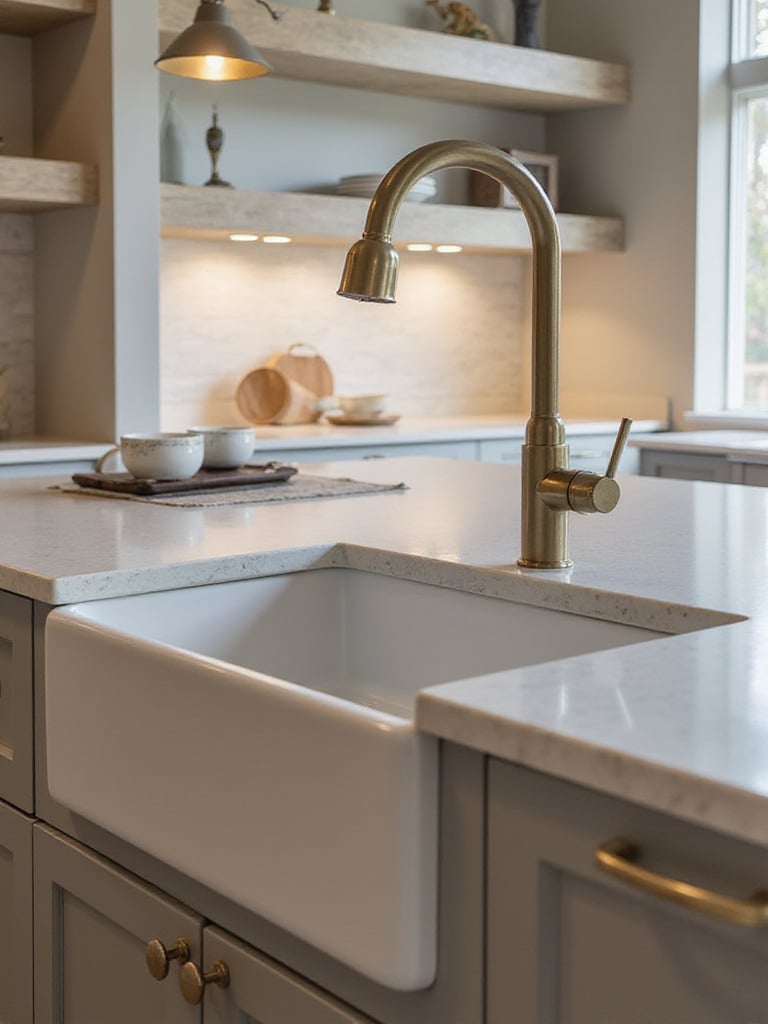
With face-frame cabinets, this gets even trickier. You have to measure the clear opening between the cabinet stiles, which can be a few inches less than the overall cabinet width. A 36-inch cabinet might only have a 33-inch clear opening. If you bought a sink that needs a 34-inch base, you’re in trouble.
My advice: measure twice, buy once. Better yet, have your contractor verify the measurements before you click “order.” Getting this right is the difference between a smooth installation and a costly, frustrating delay.
17. The Complete Picture: Budgeting Beyond the Basin
When you’re setting your budget, remember that you’re not just buying a sink. You’re investing in a complete system. The faucet, soap dispenser, garbage disposal, and any accessories all need to be part of the initial financial plan. A high-quality faucet can easily cost 25% or more of the sink’s price, and for good reason—it’s a mechanical part with moving pieces that you’ll use constantly.
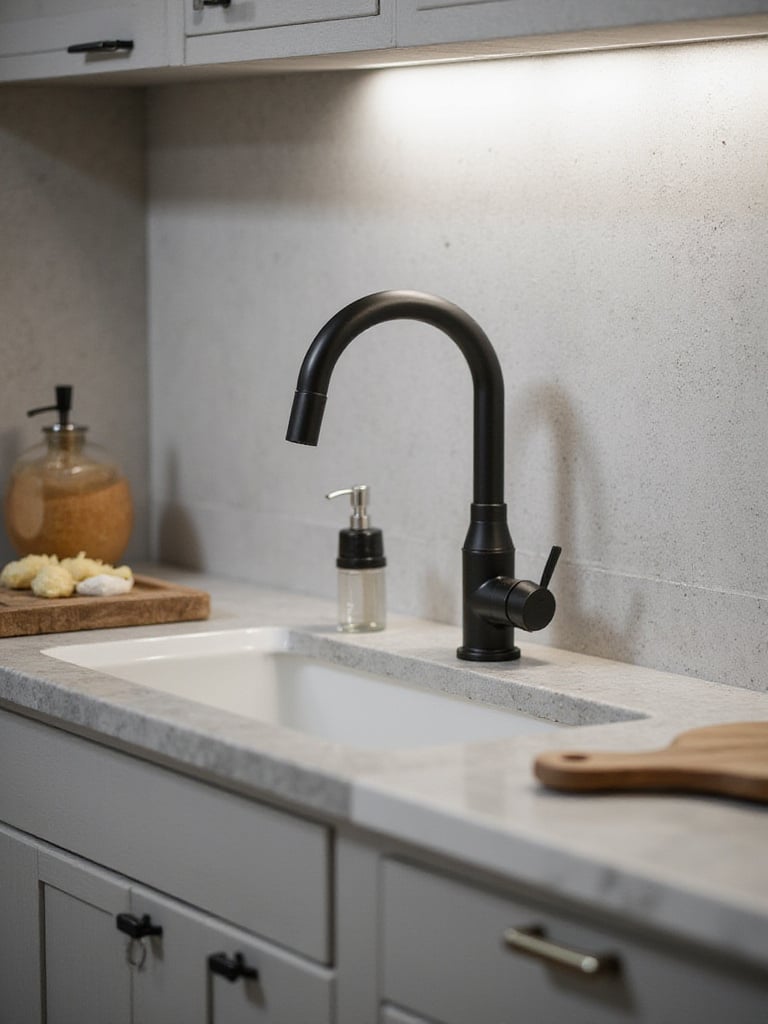
Think of it this way: putting a cheap faucet on a gorgeous, expensive sink is like putting economy tires on a performance sports car. It compromises the whole experience.
Furthermore, accessories like bottom grids are not frivolous add-ons. A custom-fit stainless steel grid that sits on the bottom of your sink is one of the best investments you can make. It protects the basin from scratches from heavy pots and allows water to drain away freely even when the sink is full of dishes. Budgeting comprehensively from the start ensures you get a fully functional, aesthetically cohesive system without any late-stage financial surprises.
18. The Art of Maintenance: A Ritual of Care
Finally, the relationship with your sink doesn’t end after installation. The way you care for it will preserve its beauty for years to come. This doesn’t have to be a chore; I like to think of it as a small daily ritual of respect for the materials in your home.
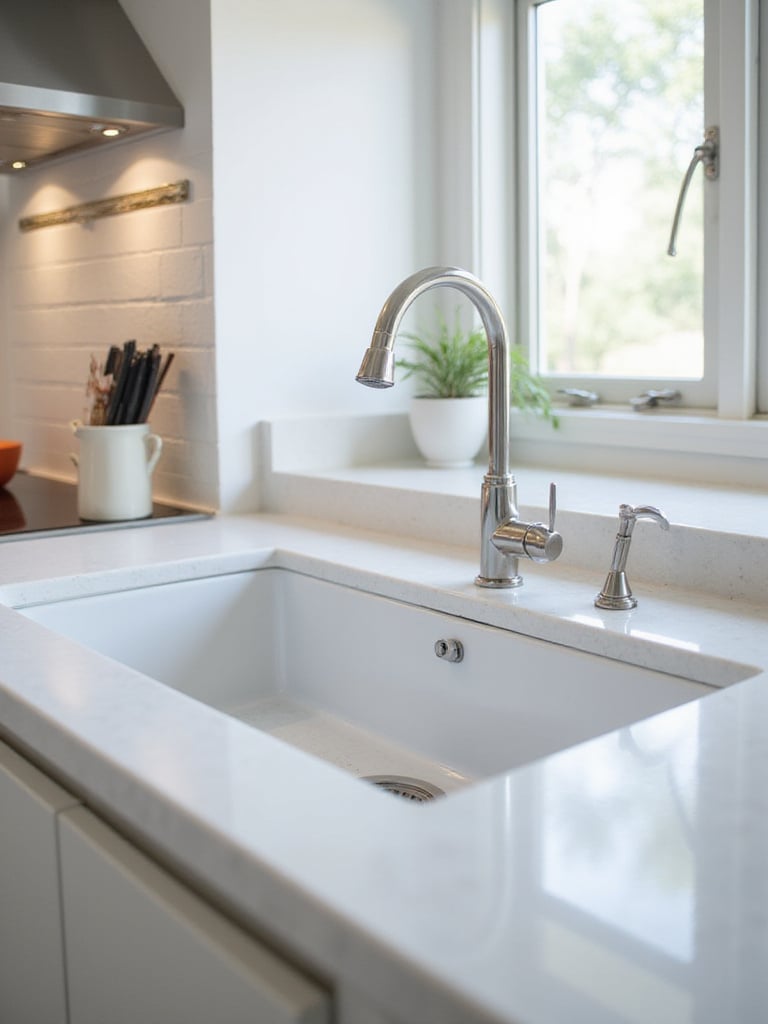
The single best habit you can adopt is to rinse and wipe your sink dry after use, especially in the evening. A quick wipe with a soft cloth prevents mineral deposits (water spots) from building up and keeps the surface looking its best.
Beyond that, follow the manufacturer’s guidance. Use non-abrasive cleaners recommended for your specific material. A harsh chemical on granite composite or an abrasive pad on a polished finish can do irreversible damage. Consistent, gentle care is all it takes to ensure your sink, the workhorse of your kitchen, remains a source of beauty and pride for its entire lifespan.
Conclusion
Choosing a kitchen sink is a deeply personal process. It’s an intersection of ergonomics, aesthetics, culture, and a practical understanding of how you live. By considering how these elements work together, you move from simply picking a product to designing an experience. You create a space that not only looks beautiful but feels intuitively right—a space that supports your creativity, respects your daily rituals, and truly serves as the heart of your home.
